Our editors independently select these products. Making a purchase through our links may earn Well+Good a commission
9 Dermatologists Break Down Exactly What Happens To Your Skin When You Add Retinol Into Your Routine
Wondering "what does retinol do?" The answer is long. Discover the benefits of retinol from anti-aging to acne reduction.

If you ask any dermatologist to name the “gold standard” of skin-care ingredients, they’ll say it’s a retinoid. The vitamin A derivative—which goes by names like retinol, adapalene, and tretinoin—stimulates cellular turnover in your skin, helping with a range of skin conditions, including acne and signs of aging. Retinol is one of the least potent (and most common) retinoids that you can access without a prescription. If you’ve been wondering, “What does retinol do?” the better question is, “What can’t retinol do?” Slather it on at night before bed and let it work its magic while you sleep.
Experts in This Article
board-certified dermatologist in Northern California
board-certified dermatologist at Audubon Dermatology in New Orleans
board-certified dermatologist and founder of Dr. Dennis Gross Skincare
director of cosmetic and clinical research in dermatology and associate professor of dermatology at Mount Sinai Hospital
board-certified dermatologist at Medical Dermatology and Cosmetic Surgery in New York
board-certified dermatologist with Schweiger Dermatology Group
board-certified dermatologist at Skin &
board-certified dermatologist based in Cambridge, Massachusetts
board-certified dermatologist specializing in medical and cosmetic dermatology
director of education at Amala Beauty
What is retinol?
“Retinoids work by binding to and turning on receptors in the skin called retinoic acid receptors that then impact how the skin behaves,” says Caren Campbell, MD, a board-certified dermatologist practicing in Napa and San Fransico, Califonia. “It takes time for these changes to begin and impact the way the skin is behaving, which is why retinoids take time to work, on average, six weeks for acne and six-plus months for anti-aging.”
While it takes some time for you to notice the retinol benefits, you might notice some not-so-great side effects after night one.
“Retinoids can cause dryness and irritation,” says board-certified dermatologist Hadley King, MD. “Retinization is the adjustment period during which the skin adapts to the use of topical retinoids. During this time the skin may become irritated, resulting in dryness, peeling, scaling, and redness or a burning or stinging sensation.”
So what happens when you use retinoids every day? Deirdre Hooper, MD, a board-certified dermatologist in Louisiana, says the results can be amazing… but there are a few things you should know before you slather it on your skin 365 days a year.
The benefits of using retinol in your daily routine
“When you put retinol on your skin, it’s absorbed into the nucleus of the cell, which is basically your cell’s brain, and it starts changing things that your skin does,” says Dr. Hooper.
It stimulates cell turnover
One of the big things it’s responsible for is stimulating cellular turnover, which brings healthy new cells to the surface of your skin as a means of replacing old, dead ones.
“Topical applications of retinoids impact how the skin’s cells behave,” says Dr. Campbell. “They speed skin-cell turnover and remove the top layer of dead skin cells which helps keep these cells from clogging our pores and causing blackheads and acne.” And without a buildup of dead skin, you also end up with a glowing complexion.
It treats acne and blackheads
“Retinol was invented in the ’60s to treat blackheads and it works to do that—it changes the consistency of your sebum, or the oil of your skin,” says Dr. Hooper. In addition to helping to minimize oil production, retinol’s ability to stimulate cell turnover helps it remove the dead skin cells that trap dirt beneath your pores, further minimizing breakouts.
It stimulates collagen synthesis
Retinol also stimulates collagen synthesis. This leads to thicker skin, explains Dr. Hooper, which makes fine lines and wrinkles less visible. It also helps to micro-distribute blotchy pigment in your skin.
“Sun damage is your body trying to protect you by producing pigment,” says Dr. Hooper. “And when you’re young, that looks like a tan, but when you get older, it starts looking like blotchy spots. This comes from the melanin, and one thing retinoids do is help to break up that melanin.”
Are there retinoids stronger than retinol?
Yes, retinal and Retin-A.
Retinol FAQs
How often should you use retinol?
How often you use retinol depends on how your skin tolerates it, which might have to do with your skin’s barrier health. Some people tolerate it best when used a few times a week while others can handle using it daily. “For most people, using retinol every day is something to work towards,” says Ranella Hirsch, MD, a board-certified dermatologist in Boston. If you start using retinol every day out of the gate, you can end up with some painful inflammation and a damaged skin barrier, negating any potential positives. Maybe you start every other day. Or every third day. Listen to how your skin is feeling and pick up the pace when feel like your skin can handle it.
What are the negative effects of retinol?
When you first start using retinol, you may experience some irritation like dryness and flaking skin. Plus, you may notice an uptick in pimples, making your complexion a bit angry before it gets better through a process that’s often referred to as “purging.”
“Skin purging happens when new ingredients, like retinol, promote increased cell turnover, which causes clogging and worsening breakouts,” says NYC-based board-certified dermatologist Michele J. Farber, MD. “This is particularly the case as oil and debris that is trapped deeper underneath the skin comes to the surface.”
At what age should you start using retinol?
You should start using retinol in your mid-to-late 20s, explains Dennis Gross, MD, a board-certified dermatologist in New York City. That’s because this is around the time our natural collagen levels start to decrease. Starting retinol around this time allows you to hold onto as much collagen as you can.
What time of year should you start retinol?
Summer is a great time to start retinol because your skin is usually stronger in the warmer, more-humid months than it is during the cool, dry months of winter. However, your skin will be more sensitive if you’ve just spent a ton of time in the sun. Plus, retinol makes your skin more sensitive to sun damage.
“You may want to drop your retinol products for a week or two before and after you take a summer or beach vacation to minimize the risk of sun damage to the skin, in particular, if you plan to sunbathe or spend a lot of time on the water, or at the beach or out outside in the elements,” says Terese Linke, director of education at Amala Beauty.
How to apply retinol
Get started at night
Retinol should always be applied at night. It can make your skin more sensitive to the sun, increasing the risk of sun damage, and it is actually deactivated by UV rays, so you won’t get the full impact if you apply it during the day. Even though you apply retinol at night, make sure you’re diligent with sunscreen application during the day because retinol use can make your skin more sensitive to the sun.
Use a small amount
Start off with a teensy amount of retinol as your skin gets used to it. You can experience irritation if you’re using too much retinol or too high of a concentration. “What usually happens with people who think they can’t tolerate retinol is that they’re just using too much, too often, too quickly and they need to ease into the product better,” says Dr. Hooper.
Apply to dry skin
Retinol is an ingredient that works best when applied to dry skin. So before bed, wash your face, dry it off and let it air dry to completion. That way when you apply the retinol, the skin can soak it in right where you applied it instead of it seeping to other areas.”It’s more effective if you’re applying it and it stays where you need to put it,” says Shirley Chi, MD, a board-certified dermatologist in Southern California.
Use moisturizer
If needed, make a retinol sandwich by applying a moisturizer before applying your retinol to serve as a barrier between the ingredient and your skin. If you don’t want to go the sandwich route, apply the retinol right to dry skin. Once the retinol is on, seal it in with your favorite moisturizer.
Avoid sensitive areas
“If anything feels red and sensitive, you can skip it on those areas,” says Dr. Hooper. Play it safe by limiting the retinol to your T-zone to start. “Almost never does your T-zone become red and sensitive,” says Dr. Hooper.
What ingredients should you not mix with retinol?
Alpha and beta hydroxy acids
Some retinols are formulated with AHAs and BHAs, and though these are all fairly aggressive ingredients, they’re generally fine to use because the concentrations and ratios were developed by chemists (as long as your skin can tolerate them). However, this is not a mix you want to DIY at home, as it can lead to major irritation. “Using AHAs and BHAs along with retinoids can cause excessive dryness,” says Dr. Campbell. Instead, you can alternate between acids and retinol (hi, skin cycling), using them on different nights.
Other types of retinoids
Retinol belongs to an ingredient family called retinoids. They’re all vitamin A derivatives that go by different names depending on their strength. Tretinoin is the strongest one and you need a prescription to get it. Over the counter, you can get other forms like adapalene, retinaldehyde, retinyl esters, tazarotene, and trifarotene. Mixing them is a no-no
“If you’re going to put on a serum that has retinol and then you put on adapalene, that’s probably going to cause irritation because now you’re amping up your adapalene,” says Dr. Chi. Limit yourself to one retinoid in your routine at a time.
Benzoyl peroxide
In theory, these seem like the perfect pair as benzoyl peroxide, a topical antiseptic, is similar to retinol in that it manages acne. However, benzoyl peroxide is an oxidizing ingredient while retinol is an antioxidant, so they can cancel each other out. According to Dr. Campbell, adapalene is the better retinoid to pair with benzoyl peroxide.
Vitamin C
Similarly to the acids above, vitamin C and retinol can work wonders together when they are formulated together—but you don’t want to mix them at home. “Sometimes layering the two can lead to increased irritation,” says Marisa Garshick, MD, a board-certified dermatologist in New York City. Instead, you can apply your vit C in the morning and the retinol at night.
Shop 8 retinols below
Below, you’ll find eight gentle, beginner-friendly retinols that are made with additional moisturizing, skin-strengthening ingredients (like retinol with niacinamide) that make it easier for your skin to tolerate the retinol. Incorporate these into your routine slowly and give it a few weeks to see if the new addition is making a difference with your skin.
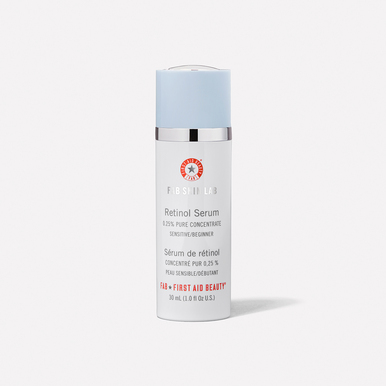
First Aid Beauty, Fab Skin Lab Retinol Serum .25% Pure Concentrate — $58.00
The First Aid Beauty Fab Skin Lab Retinol Serum .25% Pure Concentrate combines retinol and peptides with hyaluronic acid, colloidal oatmeal, aloe, and ceramides—all ingredients that Dr. Hirsh says are soothing.

Bliss, Youth Got This Serum — $29.00
“The Bliss Youth Got This Serum delivers a stabilized form of retinol in a hydrating formula to minimize skin irritation,” says Joshua Zeichner, MD, a board-certified dermatologist in New York City. “Besides retinol, this serum delivers a blend of squalane, antioxidants, and peptides to protect and strengthen the skin.”
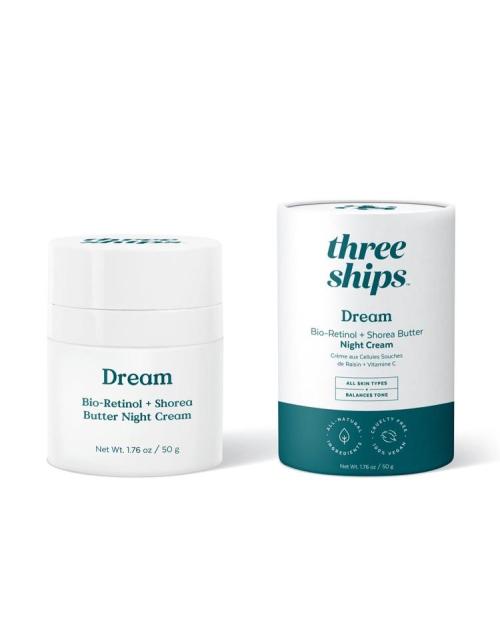
Three Ships, Dream Bio-Retinol + Shorea Butter Night Cream — $29.00
The Three Ships Dream Bio-Retinol + Shorea Butter Night Cream is made with vegan squalane and seed butters like shorea and murumuru to moisturize your skin while promoting cellular turnover with a gentle plant-based retinol derived from Picão Preto, a medicinal herb that’s native to Brazil.
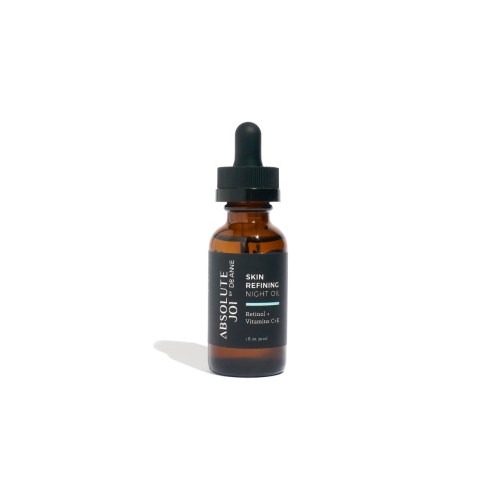
Absolute Joi, Skin Refining Night Oil with Retinol and Vitamin C + E — $37.00 to $64.00 — $2.00
The Absolute Joi Skin Refining Night Oil with Retinol and Vitamin C + E is a blend of retinol and soothing oils like jojoba, argan, and moringa. It also includes moisturizing squalene. Note that it also includes rosehip oil, so you may want to avoid it if you’re sensitive to rose, or more generally, to fragrance in skin care.
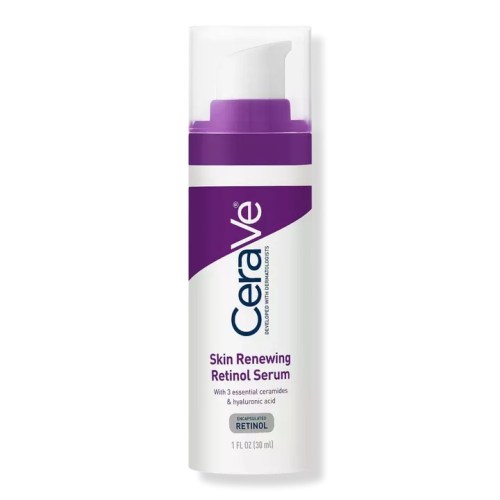
CeraVe, Skin Renewing Retinol Serum — $27.00
All CeraVe products also have ceramides and hyaluronic acid so you know immediately that this retinol’s formula with be super nourishing. It also has glycerin and shea butter to provide tons of moisture and niacinamide to regulate oil production and soothe skin.

Kiehl's, Micro-Dose Anti-Aging Retinol Serum — $60.00
This lightweight cream infused with ceramides, peptides, and glycerin is a favorite of Michelle Henry, MD, a board-certified dermatologist in New York City because “it has precise microdosing and it is formulated for the most sensitive skin types.”

Kate Sommerville, +Retinol Vita C Power Serum Firming & Brightening Treatment — $98.00
Kate Sommerville +Retinol Vita C Power Serum Firming & Brightening Treatment pairs retinol and vitamin C which “have synergistic benefits, plus a nice antioxidant profile,” says Dr. Hirsh.
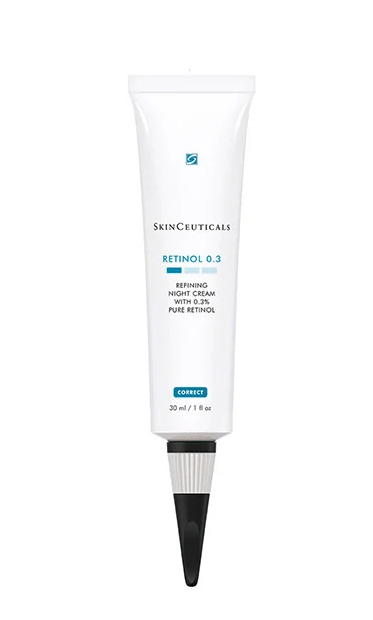
SkinCeuticals, Retinol 0.3 — $67.00
Dr. Hirsh is a huge fan of the SkinCeuticals Retinol 0.3. It is a “retinol in an extremely stable preparation,” she says. “It’s an excellent overall product.”
Get more retinol info:
Oh hi! You look like someone who loves free workouts, discounts for cutting-edge wellness brands, and exclusive Well+Good content. Sign up for Well+, our online community of wellness insiders, and unlock your rewards instantly.
Sign up for the Well+Good SHOP Newsletter
Get exclusive deals on wellness, beauty, fitness, and food products that have been hand-picked by our editors.
Got it, you've been added to our email list.










